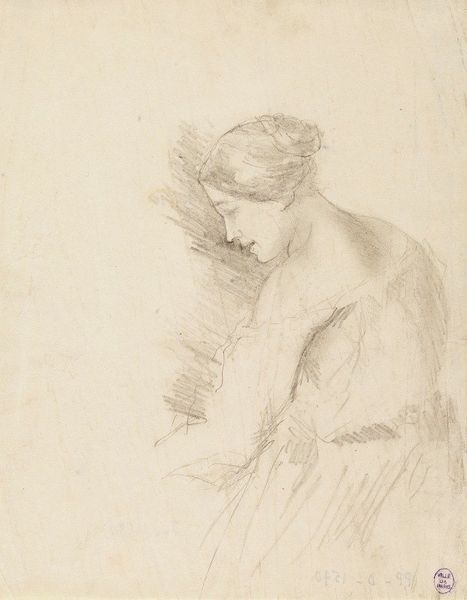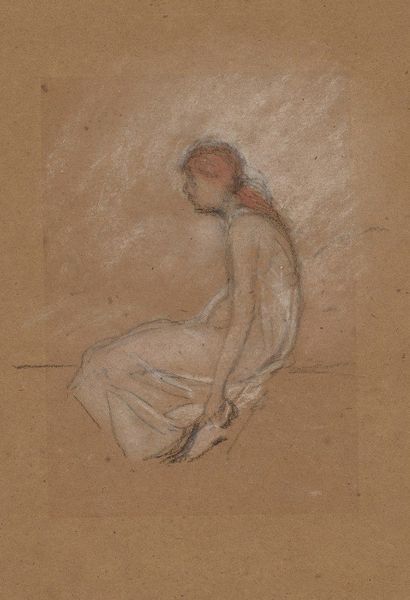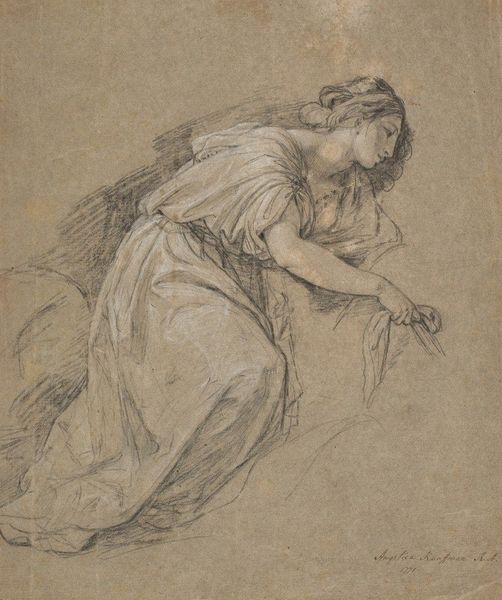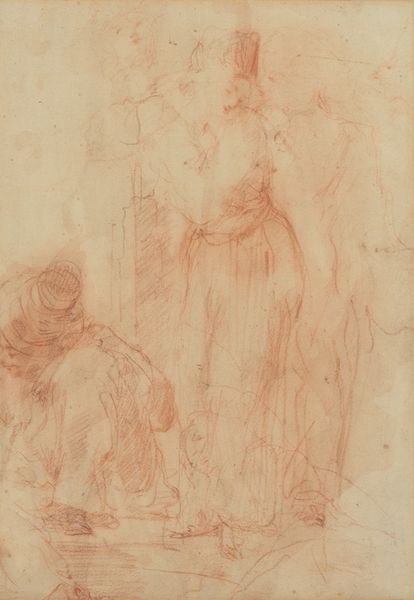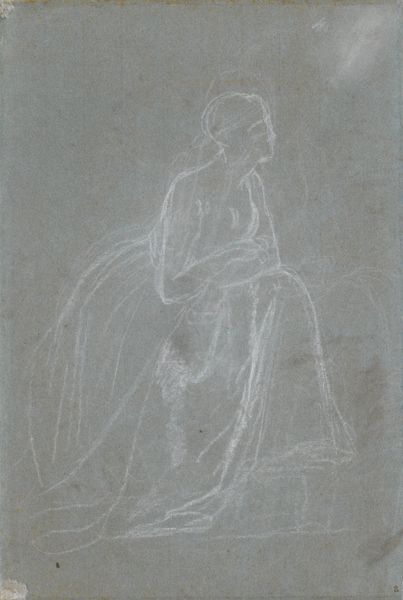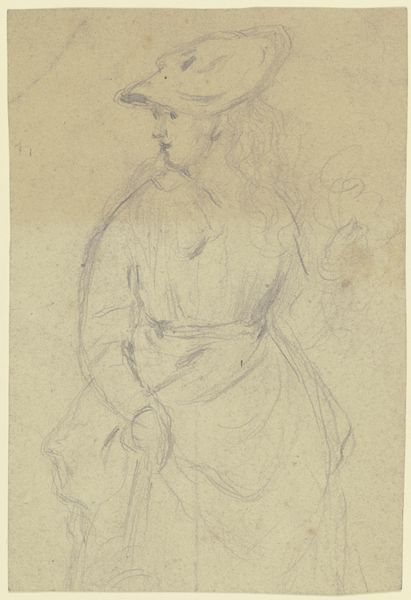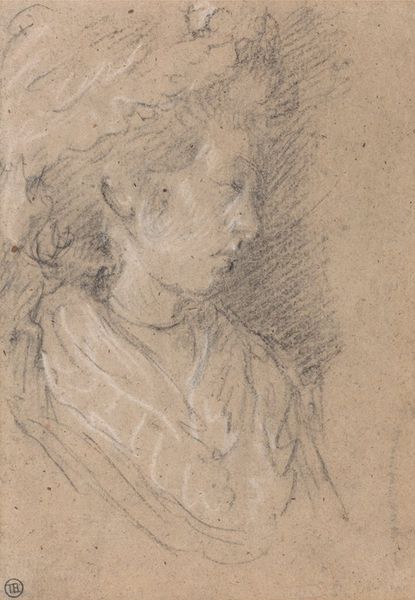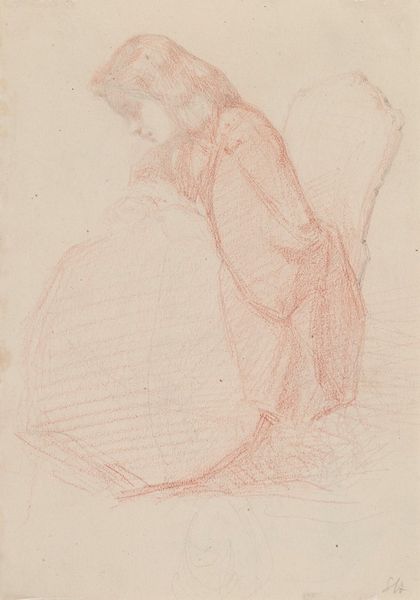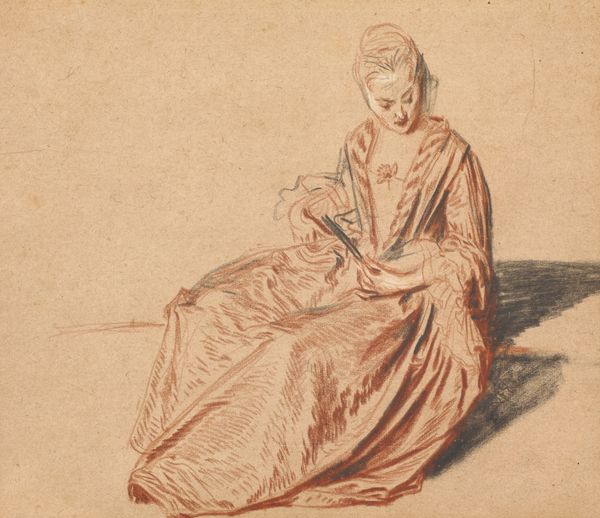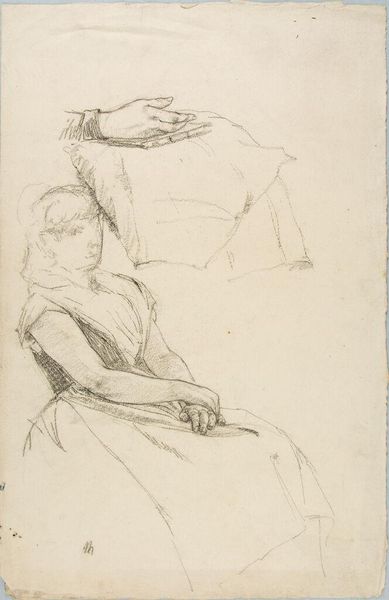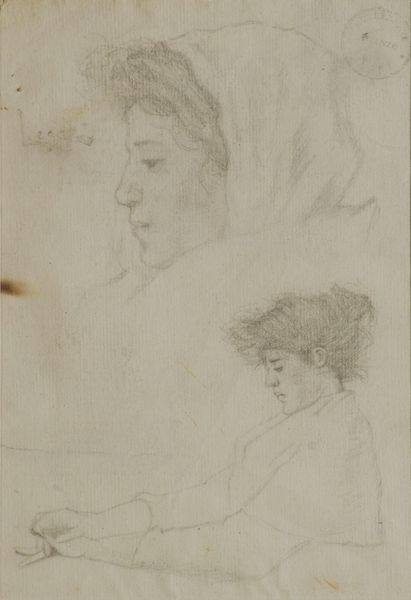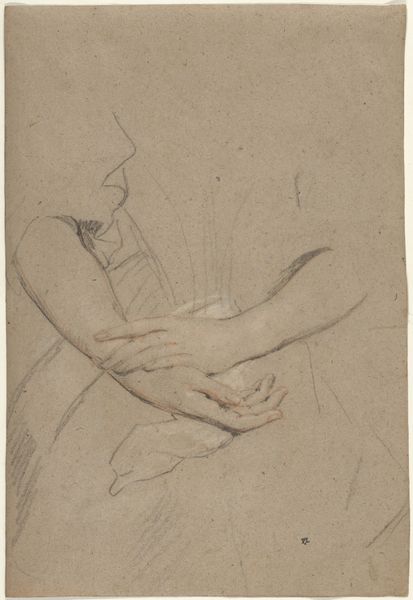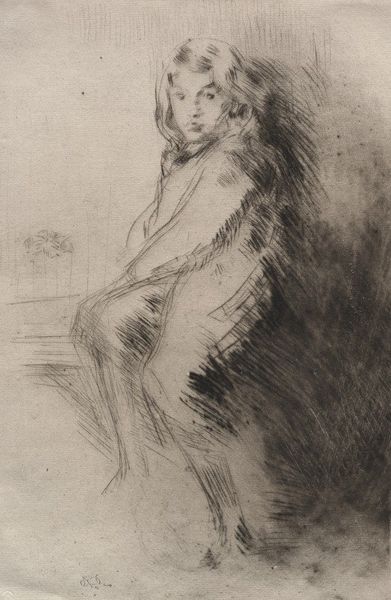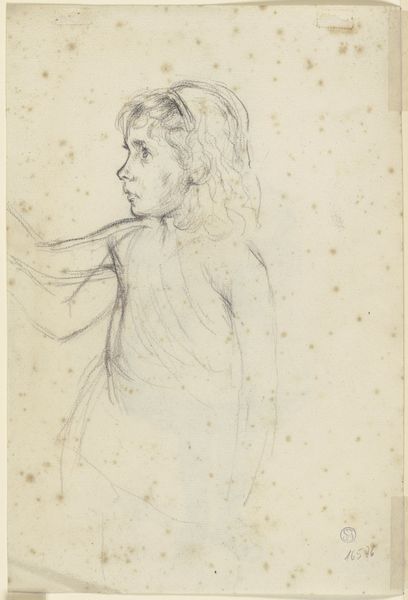
Copyright: Public Domain: Artvee
Editor: Here we have "Lesbia mit dem Vogel," created around 1866 by Anselm Feuerbach, rendered in pencil and charcoal. I’m struck by the sitter’s contemplative gaze and how the softness of the charcoal gives the piece a hazy, dreamlike quality. How would you interpret Feuerbach's artistic choices in this work? Curator: The ethereal quality you observed emerges primarily from Feuerbach’s sophisticated use of line and chiaroscuro. Note the strategic placement of light, particularly illuminating her face and hand, which pulls those features forward. The softness arises from blended charcoal, yet look closely at the distinct and decisive pencil strokes defining her form, thereby lending volume. Do you discern a tension between line and tone? Editor: Yes, the contrast is more apparent now. It seems like the sharp lines trap all that is soft. This is really subtle and not immediately visible. So why choose such austere media as charcoal and pencil if he aimed at Romanticism? Curator: A perceptive observation! Feuerbach deliberately manipulates his medium. The limitations of pencil and charcoal, far from restricting his vision, serve to amplify the emotional weight. Consider how the monochrome palette concentrates the viewer’s focus on form and structure, eschewing the distractions of color to better articulate psychological depth. Editor: That’s fascinating. I hadn't considered how limiting the palette could actually intensify the emotional impact by directing focus onto form. Curator: Exactly. The effectiveness here is found in Feuerbach’s controlled arrangement of form, line and tone, prompting questions about what constitutes the artwork. What did you learn during our talk? Editor: Paying more attention to what one usually dismisses such as tonal scale and limitations and how they enrich our perception of artwork is enriching! Curator: I learned with you. Farewell.
Comments
No comments
Be the first to comment and join the conversation on the ultimate creative platform.
